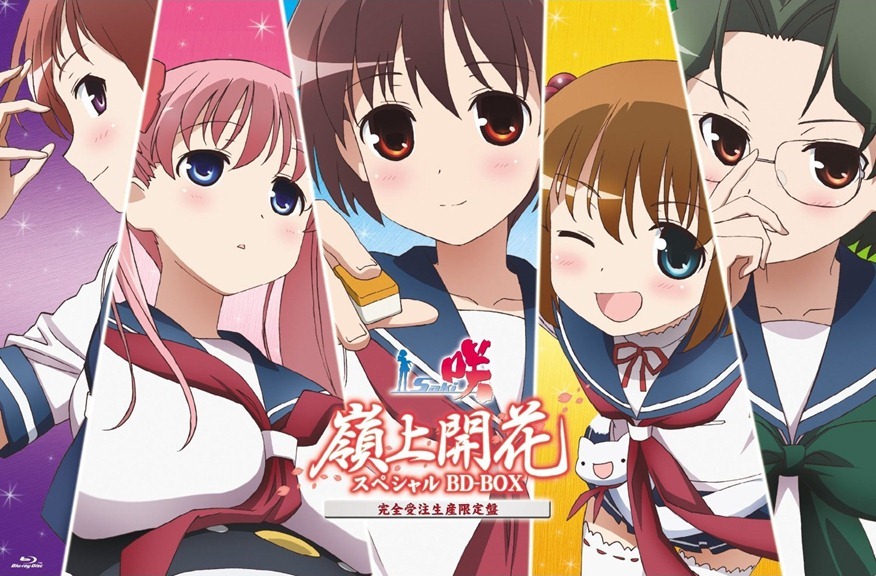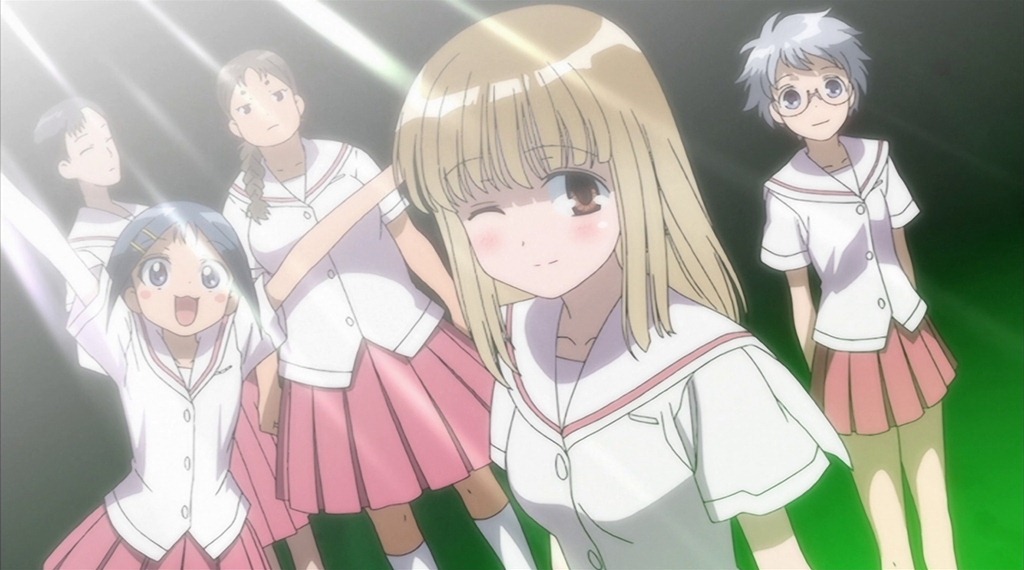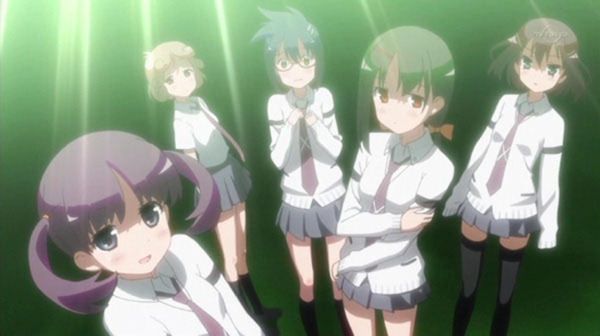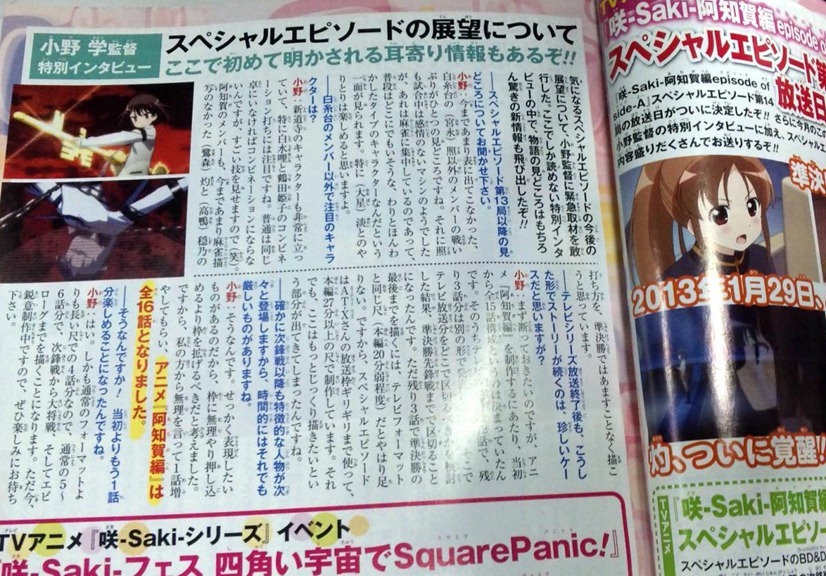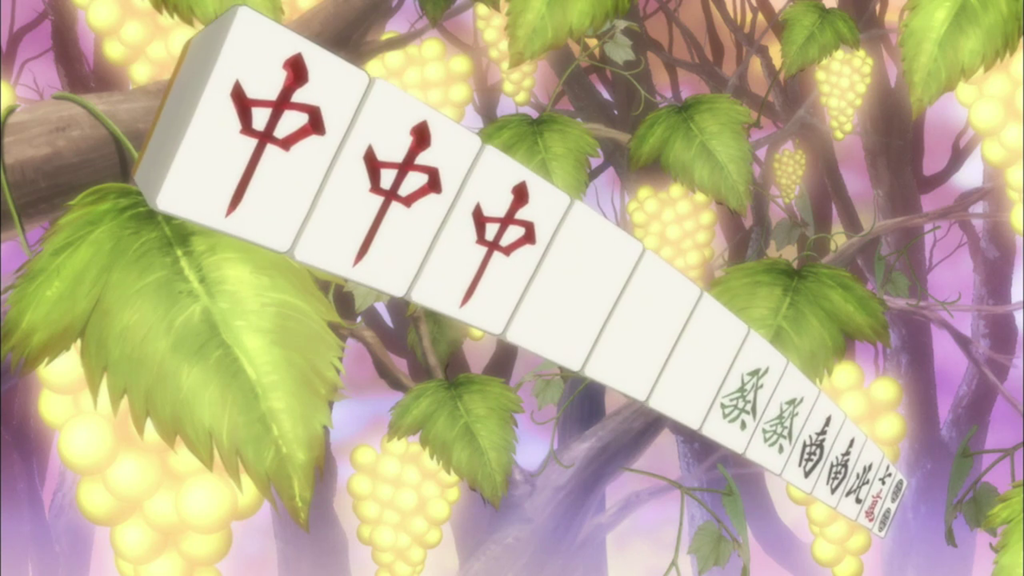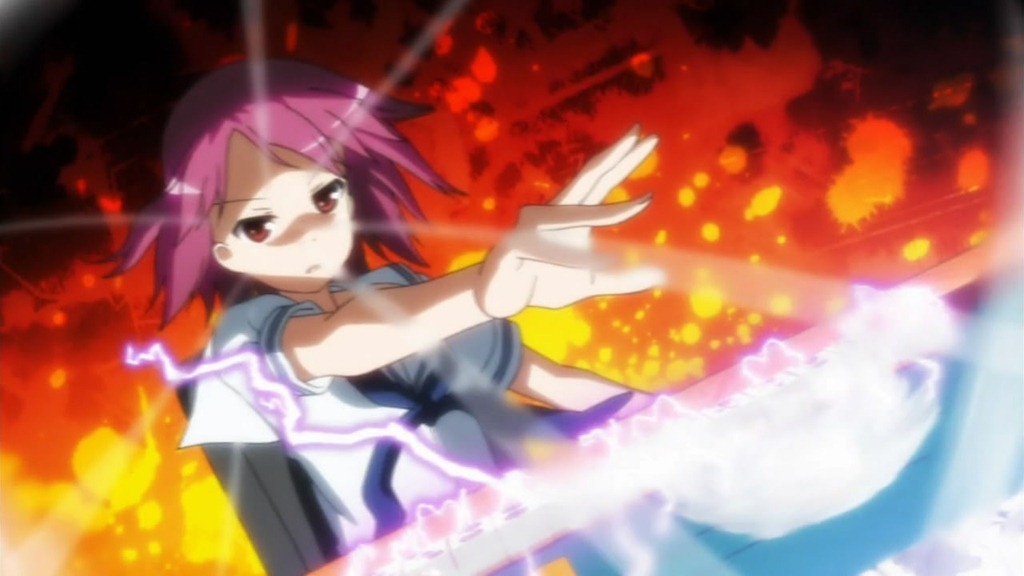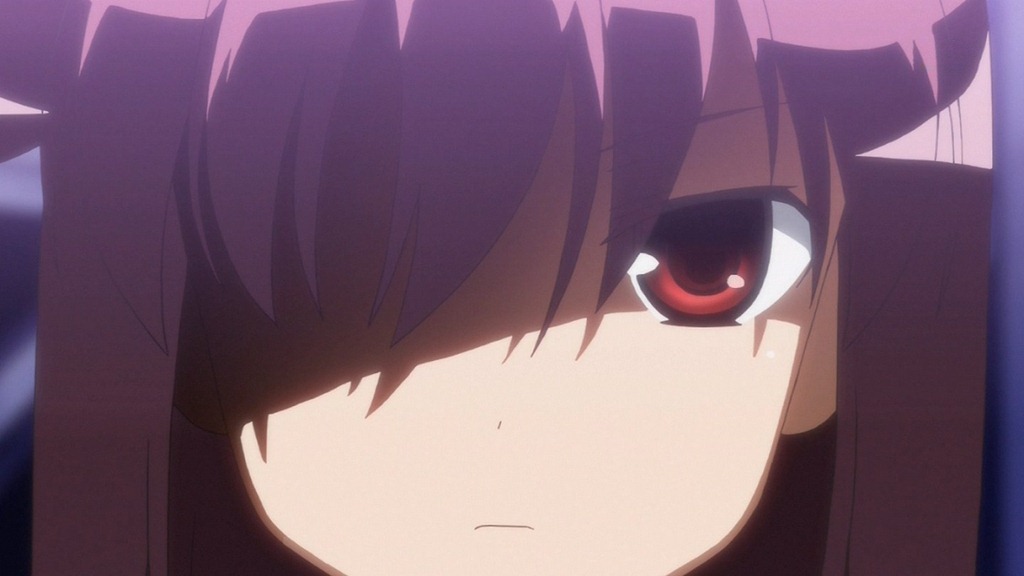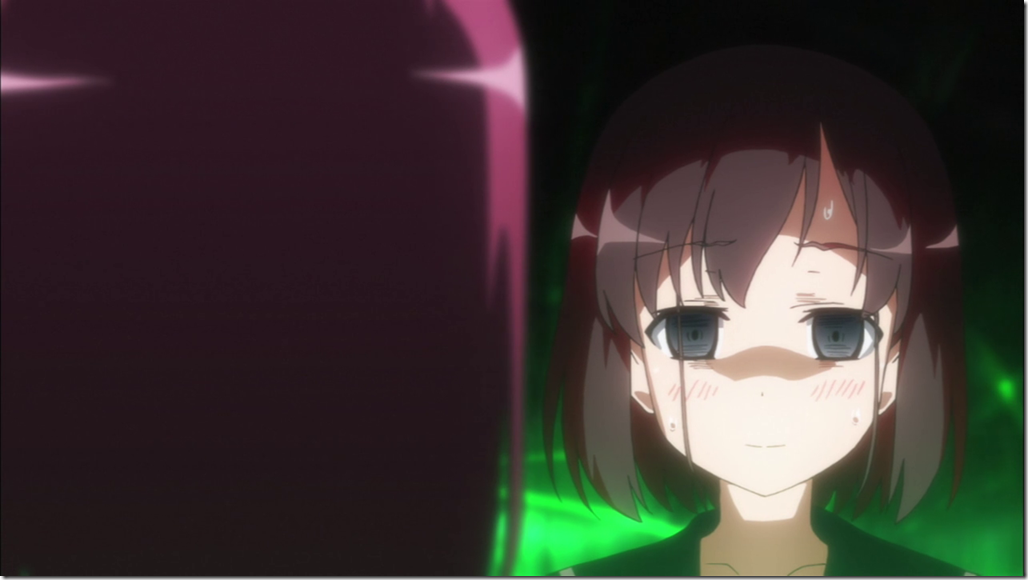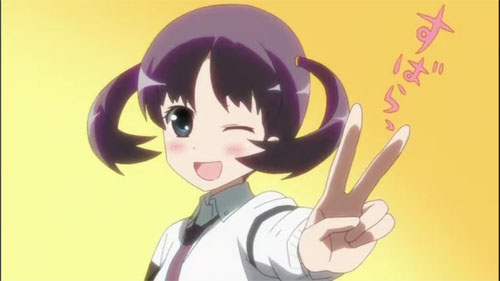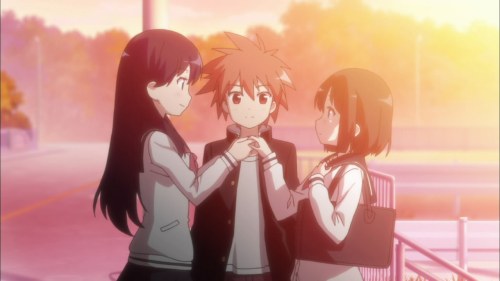
Picking a list of twelve favorite shows for this year’s AniBlogger Choice Anime Awards was quite a challenge. Deciding on the top ten was easy enough, but after that, I ran out of shows I feel really deserved the recommendation. Normally, I would just put in an ambitious-if-flawed series in there and be done with it, but most of the critic bait this year completely failed to hook me, so I will leave Kokoro Connect, Tsuritama, and Kids on the Slope to the people who actually managed to watch them through. There was the passing temptation to recognize the animation quality of such players as Fate/zeroor Chuunibyou demo Koi ga Shitai,but this would be awkward in the presence of series which managed to balance form and content, including one other KyoAni show.
When I was about to give up the two last spots entirely, I finally remembered there is more to anime than regular series. Movies couldn’t help me out in my predicament. Nanoha and Madoka could probably easily make it onto the list, but that’s for next year. The Strike Witches movie was actually surprisingly good, and would have been here had it ended any other way. But there were some OVAs out there to join the fight and give final form to this list.
Without further ado, my Top 12 of 2012.

#12 Tari Tari
Tari Tari is a coming-of-age slice-of-life series in a high school setting, which sounds like a summary of every second anime out there. Tari Tari manages to stand out by being the cream of the crop of the genre. Character designs and animation are just what you would expect from P.A. Works – beautiful and consistent in their quality. But the studio also shows it has learned its lesson from Hanasaku Iroha by producing a better-paced and more consistent series that does not stumble with side stories for characters nobody could care less about. Some of the epic feel is gone with the change from a two cour series to a single cour format, and if you compare Ohana and Konatsu as leads, the former leaves a more lasting impression, but the three female leads of Tari Tari work much better as equals. One last hurdle P.A. Works have to clear is making their male leads half as interesting as the ladies (though Wien certainly had impact).

#11 Nisemonogatari
I was not exactly crazy about Bakemonogatari when it first came out, but it is difficult to deny that the combination of Shinbou and Nishio Ishin has style. The second season keeps up tis predecessor’s original style while switching focus to some new themes. A rebel among its peers, Nisemonogatari tramples over some the medium’s favorite tropes and themes while remaining an otaku feast in other areas. Nisemonogatari gets on the list for its hot dialogue and the questions it asks about justice and morality.

#10 Sekai Senjou no Horizon II
I might have enjoyed Horizon more if I were not watching it raw and all, but the series is good enough to get on the list even with some things going over my head. It features the best-animated one-on-one character fight this year (Futayo vs Gin), some breathtaking aerial maneuvers and plot-relevant debating sessions. Of course, achieving so much on such a scale, the series must also suffer from its fair share of luggage – the enormous cast makes it impossible to focus equally on everyone, the fan-servicey character designs can scare people off, and the infodump sessions are already an established part of the show’s style. But it certainly feels like the Musashi crew made a huge step forward in their great journey, and I am eagerly looking forward to another season of their adventures.
 #9 AKB0048
#9 AKB0048
I have a soft spot for shows that manage to break through my prejudice and prove they can work even if it seems like they should have no choice but to fail. AKB0048 is one such show. Whatever it did, it would be attacked as a marketing ploy for AKB48 (and that’s certainly one of the reasons it exists). Thankfully, the people behind the show took this adversity as an excuse to make one of the most audacious shows of the year. The hilarity inherent in the whole “idols are serious business” theme of the show carries it through the first few episodes, until the characters can make things work on their own. The half-friends half-rivals relationship the girls share makes for some unique plot developments, as the characters’ loyalties are constantly being tested by internal and external pressures. The idea of an entertainment ban/ galaxy-wide cultural oppression is fascinating. And that Chieri-Nagisa scene where one of them silently bemoans that a Kirara never followed her, while the other is thinking about how the Kirara in question never once shone for her, is one of the overall best character scenes this year, instantly establishing tensions that last throughout the entire show. I would like to get at least a glimpse of other entertainment groups apart from AKB0048, just to get away from the idea that AKB0048 are the only victim of the entertainment ban and the only group trying to change things in the DES-controlled part of the universe – here’s hoping that the second season may include something like that.

#8 Touhou Musou Kakyou
I was a few months late in noticing this gem had come out. Musou Kakyou does not exactly match Maikaze’s promotional videos in terms of character designs or animation quality, but it still marks a visible improvement over the first installment and gets enough things right to make my Touhou-fan’s heart dance. I love how all those characters act pure and innocent while actually being quite mean to each other, how Youmu considers skewering somebody reasonable retribution for getting a watermelon stolen (and the poor communication skills that lead to the misunderstanding!), the random developments that will somehow turn out to be part of a Yuyuko/Yukari master plan… The VA cast is a a treat to the point that I still do not know how they got those people on board (Yuuki Aoi as Youmu and Nakahara Mai as Reimu are just delicious!). One thing I’m left wondering is, how the heck did Tewi of all people outrun Youmu? There were probably some dirty tricks involved there, but the chase did not get animated… Another question would be how many years it will take for the third installment to come out…

#7 Tamayura Hitotose OVA
Attakai Kaze no Omoide Nanode
A heartwarming OVA much in tune with the rest of the series. For my gushing over the series, check last year’s ACAA entry. Here, let me complain about how unfair Japanese name are instead. You see, Fuu’s name is written like this 「楓」and most often read as “Kaede” (meaning “maple tree”). But Fuu’s father is a huge cheat and changes the reading from Kaede to Fuu, shifting the focus from the basic meaning of the kanji and towards the wind radical (風, fuu) on its right side, changing the meaning of the name from “maple tree”to “the wind blowing among trees”. Í am so jealous the Japanese can do cool things like that with their names >_<.
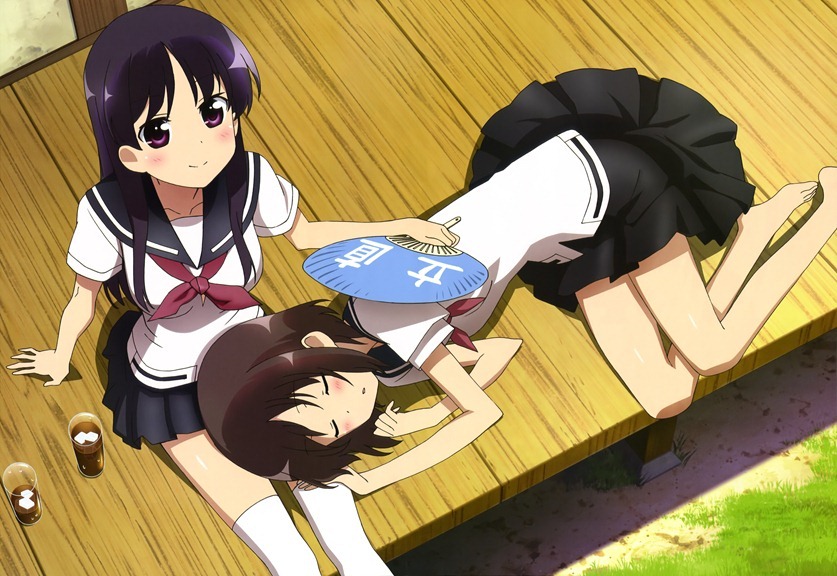 #6 Saki Achiga-hen
#6 Saki Achiga-hen
Saki is just a mix of all the anime tropes I adore. Beautiful female friendship (®), personality-based superpowers and mahjong as a weapon of choice, it’s difficult to go wrong with that. Achiga-hen does have its share of problems, like the awkward pacing and the writer’s inability to decide whether they want to develop the main characters at all or just focus on the Senriyama girls. The original series would be fighting for the top spots, while the spin-off stops at #6. But with its meticulous attention to detail and epic “battle”scenes, the show deserves this high spot on the list.
『咲-Saki-阿知賀編 episode of side-A』は今年の6位にとどまる。といっても充分高い。どんだけ咲好きか、僕は… 正直なところ、展開が速すぎたり、主人公たちの出番が少なかったり、いろいろ問題のあるシリーズだったけど、やっぱり毎週楽しみにしてた。大将戦も気になるし、最終話早く見たい。本編の第二期も…
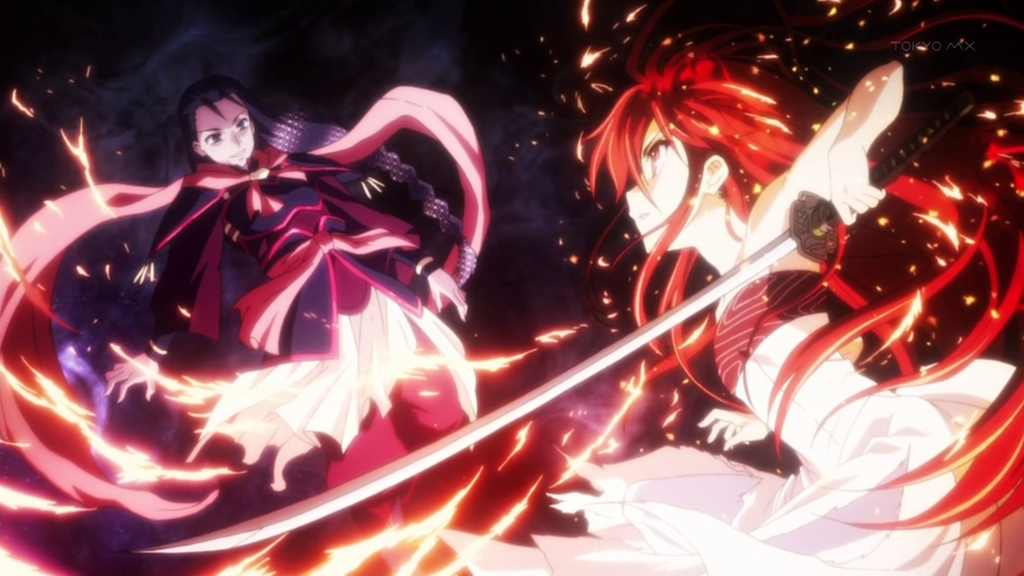
#5 Shakugan no Shana Final
A returnee from the ACAA 2011 list, jumping six spots after showing the full extent of what it had in store. Did I mention that I have a soft spot for series that manage to break through my initial dislike for them? I have never seen the first season of Shana, but I did watch the first movie. I remember sympathizing with the Crimson Denizens much more than the Flame Hazes, and I thought this series could not work. But what I thought was the author’s shortcoming was actually part of his plan all along, as what is right and wrong is no longer obvious in this series. The main bad guy crushing the good guys’ morale by showing them their life of hatred and revenge no longer has purpose or justification is a singularity not to be found in other series. The sacrifices the Denizens suffer for the sake of their shared dream made me feel nervous every time it seemed like their efforts would be all for nothing. The Serpent God being all soft-hearted and indulgent when it counted most made me sigh along with Bell Peol. The idea of Hecate being nozomarete kitaru, born through the prayers of others, added gravitas to her self-imposed martyrdom. Sakai Yuuji, an absolute pragmatist but also a man with the biggest messiah complex ever, quickly became one of my favorite characters. Seeing Shana grow strong enough to walk by that fool’s side, but smack him over the head when he really needs it, was yet another pleasure. There were times when the sereis seemed to lack time or budget to spare, but as for the content, it was one hell of a ride.
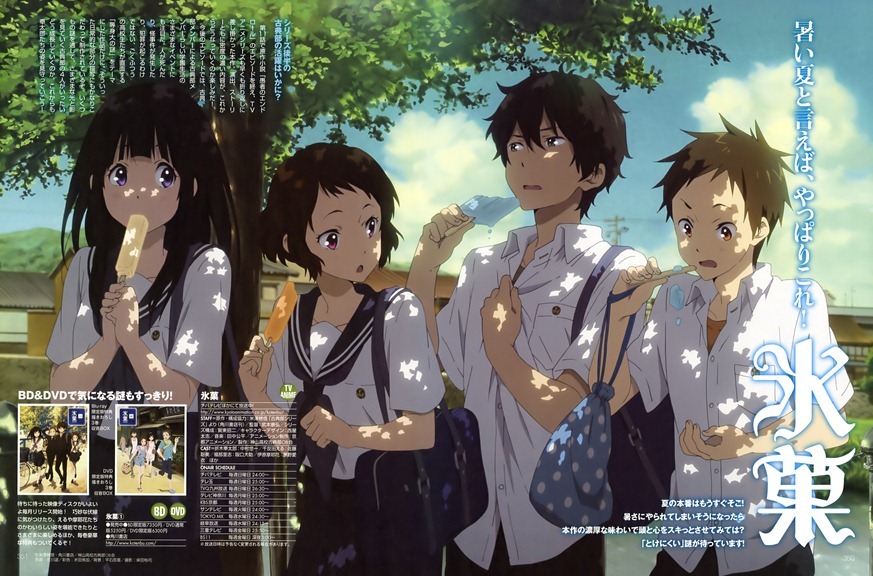
#4 Hyouka
I am quite open about being a KyoAni fan so Chuu2 not making it into my top 12 was a huge disappointment, but Hyouka more than makes up for it. Yes, it was a bumpy ride. for the first few episodes, we were not really sure whether this series would be really good or just extremely pretty. Some early Houtarou-Satoshi conversations hinted that the series could pull off something great if it wanted to, but there was no guarantee. But Hyouka was steadily getting better – not through its mysteries, which had their ups and downs, but through its characters. At some point Hyouka broke through the magical barrier where you do not care what the characters are doing, as long as they can bounce off each other. Heck, I even lobed the fan service scenes in Hyouka which revealed the wild, magnetic attraction Houtarou felt for Chitanda despite his conscious desire to avoid anything as troublesome as a romantic relationship. Satoshi and Mayaka were also great as two flawed characters who did not fit exactly into any character stereotype, remaining something of a mystery until the very end. I might be alone in this, but I consider the mountain incident mystery episode to be the best character development episode of the year, casting Houtarou’s personality and choices in a completely new light just by clearing up a seemingly meaningless mystery.
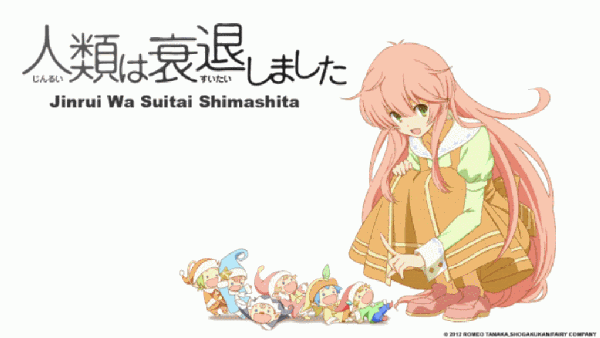
#3 Jinrui wa Suitai Shimashita
Let me be honest here – Nakahara Mai is my favorite seiyuu and every minute of this show, with Nakahara at her best and enjoying herself with a sarcastic and morally skewed character, was like a festival. Jintai had the best lead of the year, suicidal bread, biting social commentary, nihilistic faeries, lonely space probes, everything. It was touching when it wanted to be, ridiculous all the time. If there was one weakness to the show, it were those few moments when it was smart without being funny. Still, Jintai was an experience, nothing alike anything that came before it.
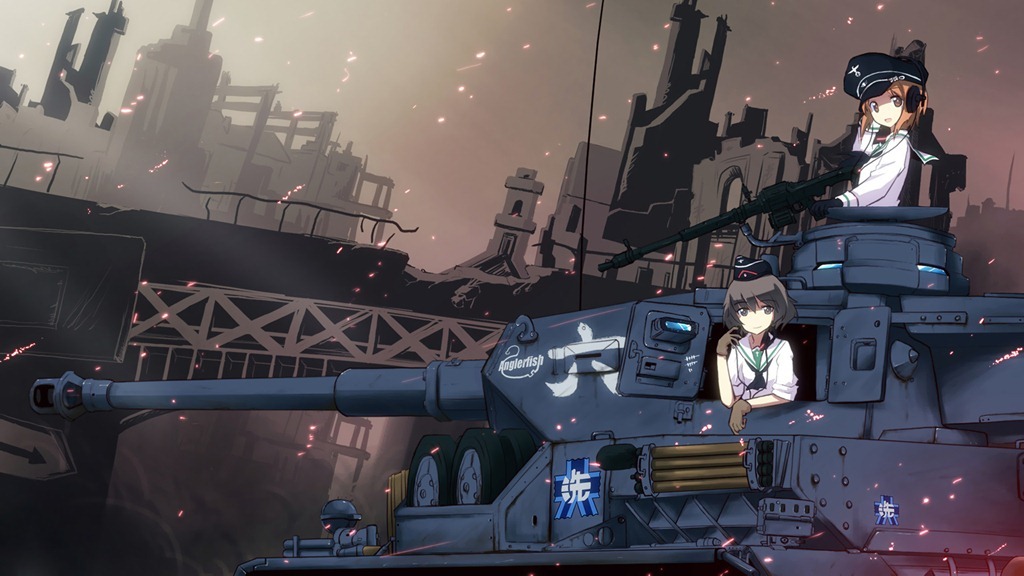
#2 Girls und Panzer
I remember commenting on Yumeka’s Jintai/Hyouka review and telling her the two would be my second and third place shows of the year unless something incredible happened in fall. And then Garupan happened.
This show knows perfectly what it is good at, and makes sure to pack every episode as full of those things as realistically possible. The action scenes are breathtaking, the use of CG top class, the setting and characters completely wacko. Some scenes, like Yukari’s espionage mission and the Katyusha rendition, are simply one-of-a-kind. The pacing is great – the hook at the end of episode one is like a promise that no, this is not just a moe show. Not that there’s shortage of moe for those interested, but Garupan never gets too caught up with just one thing, always ready with another trick when you let your guard down. Can’t wait for the conclusion to the series… and hopefully a second season!
Garupan was very, very close to taking first place, but the foe waiting there was fearsome indeed…
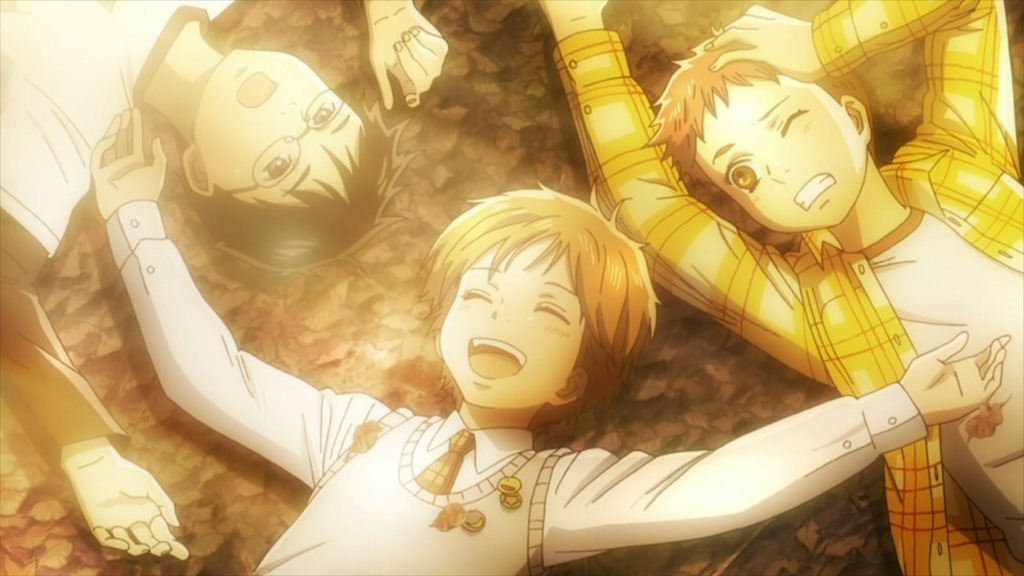
#1 Chihayafuru
Whoever made this show should get locked up immediately – its pure awesomeness makes it criminal. Nobody in the west cares about the poem-game karuta, but that is not a problem – nobody in Japan cares either, except a handful of maniacs, as the show freely admits. What counts is that you will soon care very much about the dreams, doubts and struggles of those maniacs.
Chihayafuru appeared on last year’s list after airing around a quarter of its episodes, and it only kept getting better afterwards. Chihayafuru passes the “magical wall of character development” I mentioned for Hyouka soon after the karuta club is properly established, with the newer characters no less engaging than the leads. My favorite part of the show might just be the Taichi – Nikuman / Kana – Tsukue final matches, which is saying a lot as I love Chihaya as the lead of this series. The incredible thing is that none of the characters exist separately, their dreams clash, intermingle and affect each other in unexpected ways, revealing new strengths and new weaknesses in characters we already know, providing them with a new direction. Every opponent Chihaya faces gets better development than some leads in other series, having their own goals and backgrounds, and the experience of fighting them remains in Chihaya, shaping her future actions.
So I would have fallen in love with those characters, whatever it were they did.
But of course it is impossible to remain indifferent to the portrayal of karuta in the show. Very often, portrayals of even relatively complex sports find themselves running out of ideas on how to keep up the feel of progression throughout their run and end up relying on the “faster! stronger!” formula. Chihayafuru never seems to have this problem, revealing step by step how karuta is a game of speed, detecting sounds, memorization, positioning of the cards, positioning of the body, timed breathing, psychological warfare, observational skills, endurance and even argumentative skills. All of this is presented in an easily understandable and believable way, meaning that you will never look at the ‘silly sport’ the same way again.
Chihayafuru rarely uses cliffhangers, but to me, almost every episode ending felt like a cliffhanger. The need to know whether on the next day the characters wake up stronger, ready to learn from their mistakes, is incredible.
Can’t wait till January.
—
Other ACAA 2012 entries to check out:
http://angryjellyfish.wordpress.com/2012/12/19/acaa-2012-ajs-top-12-anime-of-the-year/
http://organizationasg.kokidokom.net/2012/11/27/kuukis-ani-blogger-choice-awards-2012/
http://organizationasg.kokidokom.net/2012/12/19/geniuss-second-take-in-the-aniblogger-choice-anime-awards/
Read Full Post »

